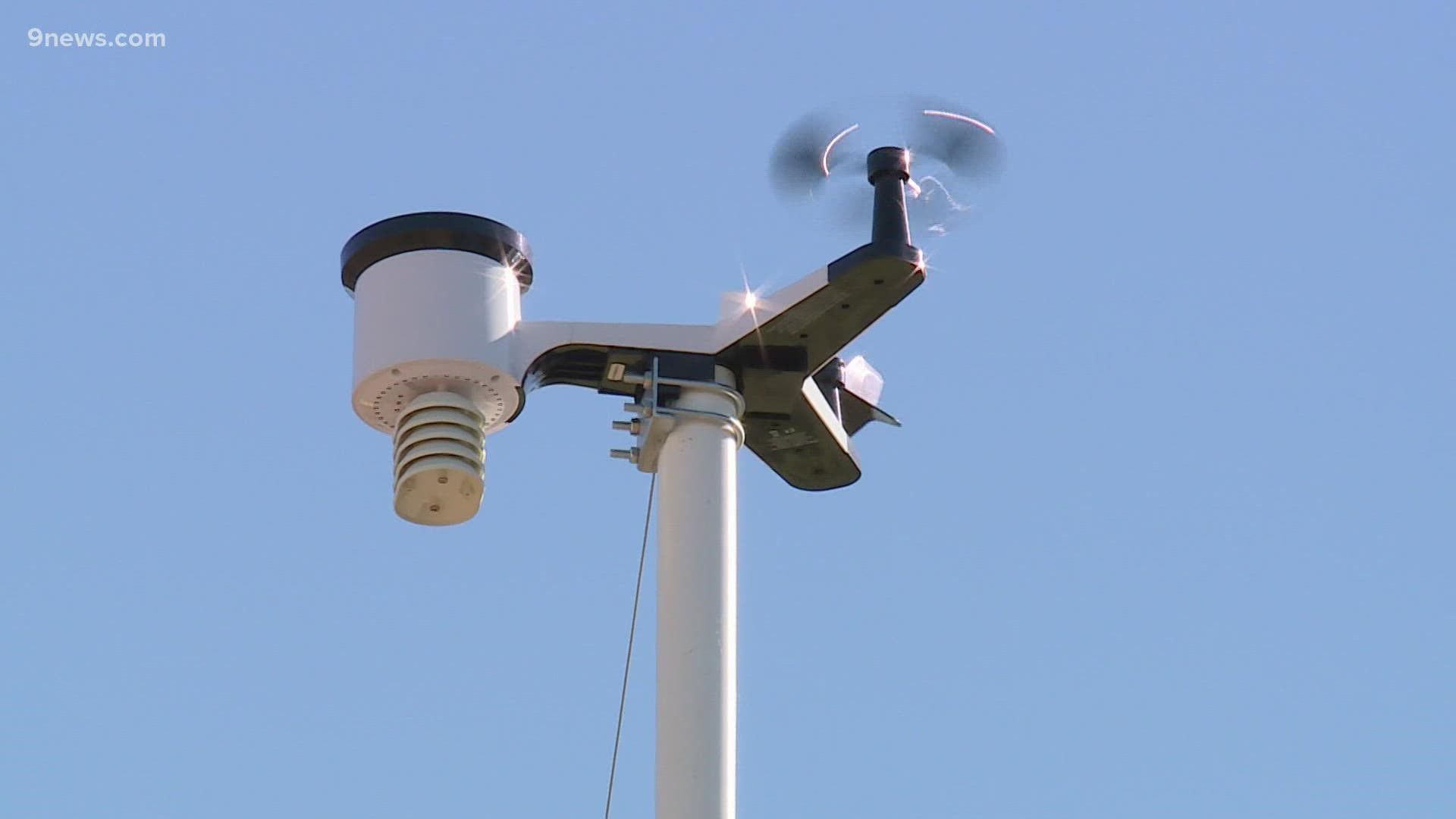DENVER — Mostly 30 to 45 mph wind gusts whipped the foothills and the west Denver metro Thursday.
The top wind gust, as of 5 p.m., was 70 mph at Dakota Hill to the northwest of the town of Black Hawk. There was a 66 mph gust at the NCAR Mesa Lab in Boulder.
Fall is the season for wind on the Front Range, and there’s a classic setup in the atmosphere.
The Front Range is stuck in a pressure gradient, sandwiched between low pressure swirling to the northeast, and high pressure to the southwest. That’s channeling in strong winds right over Colorado from the northwest.
A weather balloon clocked the jet stream moving at 150 miles per hour at 25,000 feet.
That was translating to some strong winds at the surface, but not strong enough for a High Wind Warning.
For a High Wind Warning to be issued for the mountains, foothills, and the adjacent plains like Fort Collins, Boulder and the west Denver suburbs, there must be sustained winds of 50 miles per hour either forecast or observed for at least one hour, or gusts of at least 75 miles per hour.
For the lower elevations like Denver, the eastern suburbs, and the eastern plains, it takes sustained winds of 40 miles per hour either forecast or observed for at least one hour, or gusts of at least 58 miles per hour.
The winds in Colorado were not strong enough for a warning on Thursday, but you may have seen CDOT signs warning drivers about high winds. CDOT can issue travel advisories for the highways which are separate from National Weather Service warnings.
A CDOT spokesperson said there are not really any specific criteria. They use their electronic messaging boards to keep drivers aware of weather conditions. High winds that are below the NWS criteria can still be dangerous for high-profile vehicles.
SUGGESTED VIDEOS: Science & Weather

